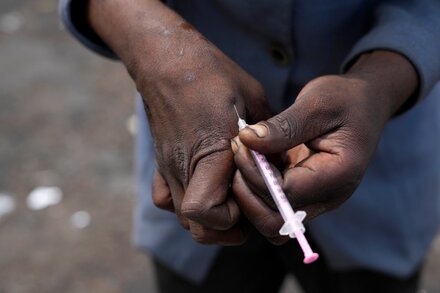A dangerous

A dangerous new drug trend, dubbed “Bluetoothing,” involving the direct sharing of blood among users, is fueling an alarming surge in H.I.V. infections across the globe, according to international health organizations and local authorities. The practice, which originated in parts of Asia and has rapidly spread, presents a significant challenge to public health efforts aimed at containing the spread of the virus.
“Bluetoothing” describes the process where individuals, typically drug users, draw blood from one person and inject it directly into another, often using the same syringe. This method is believed by some users to enhance or prolong the effects of drugs, or even to share the high, a highly dangerous and medically unfounded belief that directly facilitates the transmission of bloodborne pathogens.
Public health officials are sounding the alarm over the practice’s immediate and dire consequences. The World Health Organization (WHO) and regional health ministries have reported a sharp increase in new H.I.V. diagnoses linked to this trend, particularly within marginalized communities and among young people.
“We are witnessing a truly horrifying development,” stated Dr. Lena Khan, Director of Global Health Security at the WHO. “The direct blood-to-blood exchange inherent in ‘Bluetoothing’ is an incredibly efficient pathway for H.I.V. and other bloodborne viruses to spread. This practice undermines decades of progress in H.I.V. prevention.”
The surge has been particularly pronounced in Southeast Asian nations and is now being detected in communities across Europe, North America, and parts of Africa, indicating its rapid global dissemination. Health agencies are grappling with how to effectively intervene in a practice that deviates significantly from traditional intravenous drug use, where the primary risk was shared needles used to draw drugs from a common source.
Challenges in Prevention and Outreach
The clandestine nature of “Bluetoothing” and the communities where it often takes root pose immense challenges for intervention. Outreach workers report difficulty in penetrating groups engaged in the practice, which is often shrouded in secrecy due to stigma and fear of legal repercussions.
“It’s a tragic cycle of misinformation and desperation,” explained Maria Sanchez, a harm reduction specialist working in an affected community. “Users are often unaware of the extreme risks, or they are so deep in addiction that immediate gratification overshadows any perceived danger. We need to reach these individuals with accurate information and resources, but trust is hard to build.”
Beyond H.I.V., medical experts warn that “Bluetoothing” also increases the risk of transmitting Hepatitis B, Hepatitis C, and other severe infections, including bacterial and fungal sepsis, due to unsanitary conditions and shared equipment. The lack of sterile practices involved in blood sharing can lead to life-threatening complications.
Governments and non-governmental organizations are intensifying efforts to launch targeted awareness campaigns, expand access to H.I.V. testing and treatment, and provide harm reduction services. However, the unique and dangerous aspects of “Bluetoothing” necessitate innovative approaches to public health messaging and intervention strategies.
The global health community urges immediate and coordinated action to educate at-risk populations about the dangers of “Bluetoothing” and to ensure that comprehensive prevention and treatment services are accessible to all, aiming to curb this alarming new driver of H.I.V. transmission.
Source: Read the original article here.





